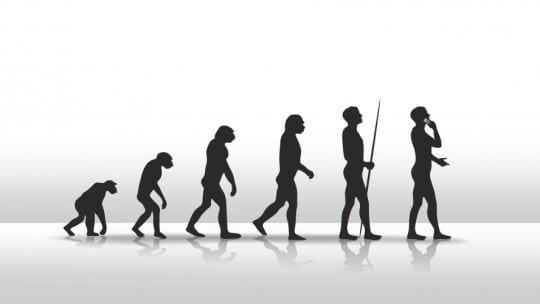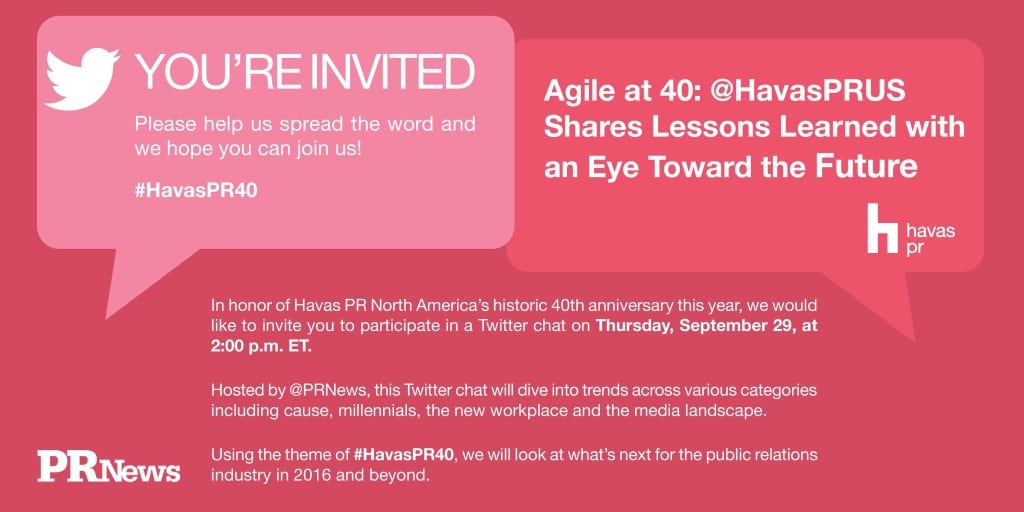
In any field, 40 years would mark a lifetime’s worth of change—or double that, since just about two generations can fit into that span. Personally, 40 years is a lifetime; I had yet to drive a car 40 years ago, and I had just sampled my first tequila (unsuccessfully, I might add). But for PR, a practice that’s had an amped-up growth cycle since its very inception, four decades means not just change but basically a complete renovation. That suits me just fine because I enjoy riding the waves of change that this industry surfs on a daily basis.
What the best PR does is amplify brand stories and messaging in ways that connect with the target audience, whether the brand defines that audience as pure consumer, professional or a hybrid. And think about what connection meant 40 years ago—if you weren’t connected via membership in a school club, a religious or professional organization, or at the very least to the households who shared your party phone line, then the extent of your connections would likely have been limited to family members, schoolmates and work colleagues.

Jump to 20 years later, and even then connectivity was rare (and loud), limited to a 2,400-baud modem and an America Online or Prodigy account. In just these past 20 years, we’ve seen a total transformation. Our world has been rocked by digital creativity and connectivity, and nowhere is this more evident than in the PR space, where innovations have become a genuine component of life. Some of those innovations, like native advertising, feel a little bit back-to-the-future-esque because they are a return of what were called advertorials or sponsored content in their original iteration.
Today’s media landscape is being reshaped by these innovations in connecting. It started with bloggers, then segued to citizen journalists, YouTube creators and everyday folks with larger followings than anyone could have dreamed of 40 years ago—or 20 years ago, for that matter. Going back 20 years, we had Monica Lewinsky as featured on Matt Drudge; remember, it was online journalists like Drudge who rewrote the rules of how and when and where to break news. Now, outlets like Business Insider and BuzzFeed can upstage even the oldies but goodies that have historically been the top prizes chased by PR folks—redefining the very notion of top-tier media outlets. And talk about redefining: Thanks to the Kardashians and others, we have gotten (extremely) comfortable with the ultimate in promoter personalities—i.e., those who are famous for simply being famous.
Speaking of the Kardashians brings us to another new development in PR and branding that has really just come into its own in the past decade or so—the focus on personal branding. In 2016, we aren’t company people; rather, we lease ourselves to employers and steward our own personal brands to ensure we maintain a sense of ownership and integrity. That is a huge change over four decades—no one really worried about Brand Me until Steve Jobs proved that it could be a win-win proposition. Look around now; the curation and care of our personal brands is front and center everywhere.
Right now there are genuinely stunning developments in the form of intense focus around visuals and visual storytelling (Instagram, Pinterest or Snapchat lately?) and the packaging of the infographic. Snapchat is the now, and I think 10-second video storytelling will be the rage for some time to come. All the live and video moments are worth tracking. Also, there are whole new genres popping up in the monitoring and measurement space as well as in boosting and influencer marketing, all redolent with new companies, new offers and the momentum that comes from shiny-new-object status.
The latest innovation I’m seeing on the horizon is the quest to bring agile or real time into the newscrafting space. We are living and breathing it at my agency, and so far I believe we are ahead of the curve on that. We know that PR is an always-on profession and service offer, and that’s an idea that’s really been coming into its own over the past few years.
In PR, as in the rest of the world, change is the only given. But in PR, unlike in many other industries, opportunities spring from riding the crests of change, embracing them and recognizing that the hierarchies of age and experience are meaningless unless you do something new or novel in the now.
Marian Salzman is chairman, global collective, Havas PR, and CEO of Havas PR U.S. @mariansalzman
